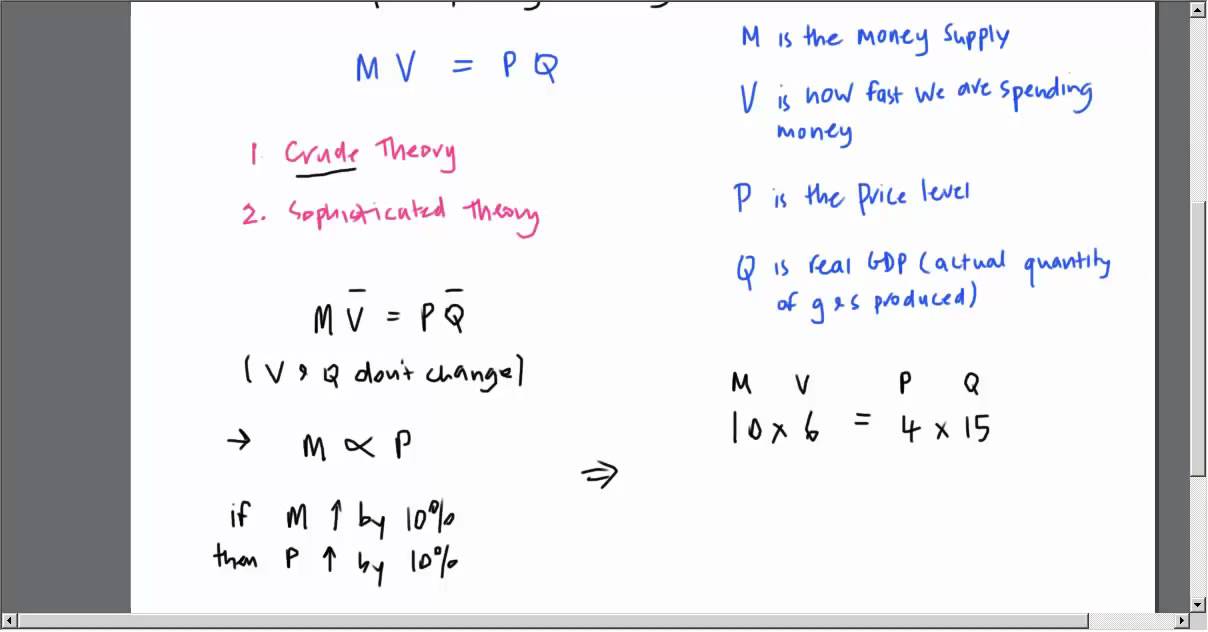Statement Of Stockholders Equity
Contents:


Step #5 Finally, the closing balance of equity can be derived by adding net income to the opening balance of equity , deducting dividends , and other adjustments , as shown below. Equity, in the simplest terms, is the money shareholders have invested in the business including all accumulated earnings. The shareholder equity ratio is used to get a sense of the level of debt that a public company has taken on. Shareholder equity is also referred to as shareholders’ equity, stockholder equity, or stockholders’ equity. Locate total shareholder’s equity and add the number to total liabilities. Shareholder equity gives analysts and investors a clear picture of the financial health of a company.
- Shares OutstandingOutstanding shares are the stocks available with the company’s shareholders at a given point of time after excluding the shares that the entity had repurchased.
- It may even choose not to pay a dividend if it feels that it might require funds elsewhere, e.g. in expanding the factory or investing in a new project, etc.
- Stockholders possess voting rights about company decisions, such as electing a board of directors and voting on policies.
Paying more than the amount in the income statement is unfavorable for the corporation’s cash balance. As a result the $9,000 decrease in accounts payable will appear in parentheses on the SCF. The stockholder’s equity statement captures the movement of retained earnings. Dividend payments by companies to its stockholders are completely discretionary.
Potential downsides for firms that engage in a “War For Talent”
If average collection period formula observes that the value of shares is declining day by day in the market. They will adopt the strategy of buying its own shares by paying to the stockholders. Preferred Stock → A special ownership stake in the company that provides holders with a higher claim on a company’s earnings than common stockholders.
The https://1investing.in/ of owner’s equity essentially displays the “sources” of a company’s equity and the “uses” of its equity. Retained earnings are the total earnings a company has brought in that have not yet been distributed to shareholders. This figure is calculated by subtracting the amount paid out in shareholder dividends from the company’s total earnings since inception. A company that’s been profitable for quite some time will probably show a large amount of retained earnings.
Additionally, the Company expects to publish its annual INtersections reportmid-year and will continue to include disclosures on our climate, circularity and other sustainability initiatives. Stockholders approved an advisory resolution on executive compensation and ratified the appointment of Deloitte & Touche LLP as Dow’s independent auditor for 2023. A majority of votes cast by Dow stockholders were against the Stockholder Proposal for an Independent Board Chairman and against the Stockholder Proposal for a Single-Use Plastics Report.
Benefits Of Statement Of Shareholders’ Equity
Check out our FREE guide, Use Financial Statements to Assess the Health of Your Business, to learn more about the different types of financial statements for your business. Current assets are items of value that can convert into cash within one year (e.g., checking account). Noncurrent assets are items of value that take more than one year to convert into cash. Your cash flow might be positive, meaning that your business has more money coming in than going out. Or, your company could be in negative cash flow territory, which indicates that you’re spending more money than what you’re bringing in. Now, you can’t go off creating your different financial statements all willy nilly.
After you generate your final financial statement, use your statements to track your business’s financial health and make smart financial decisions. Or, you can add your retained earnings statement to your balance sheet. Investors, lenders, and vendors might be interested in checking out your business’s cash flow statement. That way, they can see whether or not your company is a good investment.

The shareholders’ equity will decrease by the amount used to repurchase treasury stock. The components that form part are major items that impact Shareholder’s Equity statement. Privately owned companies do not always have stockholders, so if your private business has never sold any equity shares, you won’t have to create a stockholders’ equity statement. However, if you are publicly owned , you’ll want to understand what goes into creating this document so you can ensure you’re including the right information. It will be shown in the statement of stockholders’ equity by adding in total stockholders’ equity. Treasury Stock → Share buybacks are used by companies seeking to compensate shareholders.
3 Presentation of changes in stockholders’ equity
Retained earnings should not be confused with cash or other liquid assets. This is because years of retained earnings could be used for either expenses or any asset type to grow the business. Keep in mind that shareholder equity, though, is not the same as liquidation value. In liquidation, physical asset values are reduced and other extraordinary conditions exist.
BOWMO, INC. MANAGEMENT’S DISCUSSION AND ANALYSIS OF FINANCIAL CONDITION AND RESULTS OF OPERATIONS (form 10-K) – Marketscreener.com
BOWMO, INC. MANAGEMENT’S DISCUSSION AND ANALYSIS OF FINANCIAL CONDITION AND RESULTS OF OPERATIONS (form 10-K).
Posted: Thu, 13 Apr 2023 20:19:07 GMT [source]
The statement of owner’s equity is also used to compare a company’s performance over time and the performance of different companies. The retained earnings account on the balance sheet is said to represent an “accumulation of earnings” since net profits and losses are added/subtracted from the account from period to period. Stockholders’ equity, also referred to as shareholders’ or owners’ equity, is the remaining amount of assets available to shareholders after all liabilities have been paid. It is calculated either as a firm’s total assets less its total liabilities or alternatively as the sum of share capital and retained earnings less treasury shares. Stockholders’ equity might include common stock, paid-in capital, retained earnings, and treasury stock. Financial Statements are an important source of information for external stakeholders as well as for general shareholders.
What Is a Statement of Owner’s Equity and Why Is It Important? – Conclusion
Figure FSP 5-1 shows an example statement of changes in stockholders’ equity in columnar format. Unrealized gains and losses are a reflection of changes in investment price. An investment that increases in value but hasn’t been cashed in results in an unrealized gain. Similar to this, when an investment loses value but isn’t yet liquidated, it experiences an unrealized loss. IAS 1 defines equity as the residual interest in the net assets of an entity that remains after deducting its liabilities.
These components include the owner’s contributions, such as investments, and the company’s earnings, such as profits or losses. The statement also reflects any dividends paid to shareholders and any changes in the number of shares outstanding. This information is used to evaluate the financial health of the company and its ability to generate profits and pay dividends.
The difference between total assets and total liabilities, which is often measured monthly, quarterly, or annually, is the statement of stockholders’ equity. It can be found on the balance sheet, one of three crucial financial records for all small firms. The income statement and the cash flow statement make up the other two.
This is the date on which the list of all the shareholders who will receive the dividend is compiled. Bob bought $50,000 of capital stock of the business by investing it in cash. The is the date on which the list of all the shareholders who will receive the dividend is compiled. Founder shares or class A shares have more voting rights than for instance the other class of shares.
Run » Finance
John also contributed an additional $10,000 to the business and made a draw of $5,000 for personal expenses. The relationship between the statement of owner’s equity and accounting can be further understood by examining how accounting principles and concepts apply to the preparation of the statement. Second, some believe that the Statement of Owner’s Equity is the same as the balance sheet.
European bank supervisors step in to stem rout in bonds – Reuters
European bank supervisors step in to stem rout in bonds.
Posted: Mon, 20 Mar 2023 07:00:00 GMT [source]
It is changed with the amount that would be arrived if the new accounting policy had always been enforced. Further, it also allows the analysts and other readers of the financial statements to understand what factors resulted in the change in the equity capital. EquityEquity refers to investor’s ownership of a company representing the amount they would receive after liquidating assets and paying off the liabilities and debts.
For example, suppose the company’s equity has increased significantly over a given period. In that case, it may signify that the business is experiencing growth and may be ready to take on new opportunities. When examined along with these other benchmarks, the stockholders’ equity can help you formulate a complete picture of the company and make a wise investment decision. Lower stockholders’ equity is sometimes a sign that a firm needs to reduce its liabilities. While footnote disclosure is permitted, the most common presentation is as a separate statement of changes in stockholders’ equity.

Our guide will both define and explain the components of a stockholders’ equity statement. And in order to calculate total liabilities for this equity formula, add both current liabilities (accounts payable and short-term debts) and long-term liabilities . In order to determine total assets for the aforementioned equity formula, there is a need to add both long-term assets as well as the current assets which include cash, inventory and accounts receivables.
AnPac Bio-Medical Science Granted Continued Listing by NASDAQ Hearing Panel, Subject to Meeting the Equity Rule on or before July 12, 2023 – Yahoo Finance
AnPac Bio-Medical Science Granted Continued Listing by NASDAQ Hearing Panel, Subject to Meeting the Equity Rule on or before July 12, 2023.
Posted: Thu, 23 Mar 2023 07:00:00 GMT [source]
This document outlines the contributions made by owners, distributions made to owners, and any other changes that have impacted the owner’s equity balance. Stockholders’ equity shows the quality of a firm’s economic stability; it also provides insights into its capital structure. Finding it on the balance sheet is one way you can learn about the financial health of a firm. Additional paid-up capital, sometimes referred to as contributed capital, is the sum that investors put over the par value of a company’s stock. The report gives stakeholders a better understanding on how the equity accounts have changed via the repurchase of stock, issuance of common and preferred equity etc. It helps determine the number of earnings retained by the business and treasury stocks purchased during the period.
However, debt is also the riskiest form of financing for companies because the corporation must uphold the contract with bondholders to make the regular interest payments regardless of economic times. Where the difference between the shares issued and the shares outstanding is equal to the number of treasury shares. Finally, the number of shares outstanding refers to shares that are owned only by outside investors, while shares owned by the issuing corporation are called treasury shares. Use the formula above to help calculate your retained earnings balance at the end of each period. This is because years of retained earnings could be used for expenses or any asset to help the business grow.
